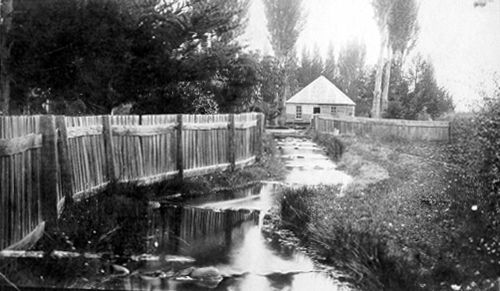 |
 |
|
Aquaculture
Aquaculture in Australia can be claimed as starting in the Salmon Ponds, where in 1864, the first trout and salmon fry were hatched in the southern hemisphere. However the production and release of immature fish into the environment is not truly aquaculture. Oysters were the first species artificially grown and harvested for sale as food in Tasmania. By 1860 the dredging of native oysters was one of Tasmania's most valuable primary industries. Most were sent to Sydney and 22 million were harvested in a single year. However by 1882 a Royal Commission found that the oyster fishery had been destroyed through neglect, and recommended that the management of fisheries be placed in professional hands and the oyster industry be revived. William Saville-Kent demonstrated how to farm oysters and eighteen government 'reserves' were established; by the time he left Tasmania in 1888 there were twelve private oyster farms, but the industry then faded. At the end of the Second World War the occupying powers sent scientists to Japan to study aquaculture. CSIRO had considered reviving the edible oyster industry in the southern states with the Japanese Pacific oyster. After the war batches of these oysters were brought by ship and air and released near Hobart Airport. They grew well but did not spawn and large numbers were moved to the warmer waters of Port Sorell. Acclimatisation was assisted over the next twenty years by unauthorised distribution of adult oysters. When the apple industry encountered problems in the 1970s a number of orchardists revived the oyster industry. When spawning problems arose again Tasmanian researchers built the first oyster hatchery in Australia in 1979. Buoyed by their success with oyster culture, researchers demonstrated the possibility of farming mussels, scallops and abalone, and private investors followed. Almost a hundred years after the first salmon ova arrived in Tasmania the law was changed to allow salmonids to be sold, which meant commercial culture of salmonids could begin. The first Tasmanian trial trout farm was established at Bridport in 1964. The rearing of Atlantic salmon in Tasmania twenty years later brought salmonid culture full circle. A second commercial trout hatchery was established by Russell Falls Trout Farm on the Tyenna River in 1978. In 1981, net pen rearing of rainbow trout in the sea was carried out on an experimental basis, and by 1983 several companies had successfully established marine farming of rainbow trout, operating at Bruny Island and Nubeena. Led by the Tasmanian Fisheries Development Authority, a joint venture with Norwegian investors formed a company called Noraqua in 1984 to underpin true salmon culture. Atlantic Salmon ova were imported from Gaden Hatchery in New South Wales to quarantine facilities at Taroona, where they hatched. These smolts were taken to the joint venture company at Dover, and Noraqua harvested the first Tasmanian Atlantic Salmon in 1986. Similar results were obtained by Nortas at Bruny Island. These results justified the immediate construction of a full-scale hatchery and the development of commercial sea farms. By 1989 Tasmanian salmon was competing with Norwegian suppliers on the Japanese market and Noraqua left the industry. By 2001 Tasmanian farms produced over 12,000 tonnes of salmon. The modern aquaculture industry owes much to the work done at the Taroona marine laboratory, particularly for its work on salmon, oysters, mussels and abalone. As the importance of aquaculture to the Tasmanian economy grew, the subject began to be taught in both schools and at the University of Tasmania. A sea horse farm at Beauty Point was based on research at the University's School of Aquaculture. In 1998 the Taroona facility and staff entered into a joint venture with the University of Tasmania to form the Tasmanian Aquaculture and Fisheries Institute. Further reading: A Harrison, Savant of the southern seas, Hobart, 1997. Tony Harrison
|
Copyright 2006, Centre for Tasmanian Historical Studies |
